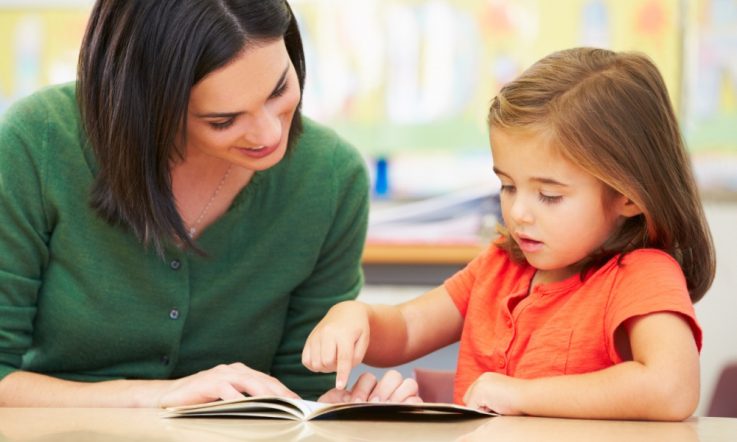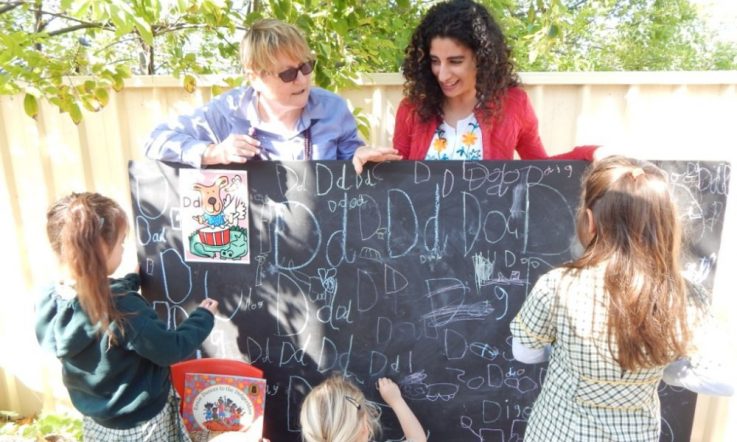Maureen Pollard – literacy consultant, educator and author of the Little Learners Love Literacy series - sits down with Teacher for a Q&A on decodable text.
What is decodable text?
'Decodable text is text that children can read using their phonic knowledge. In the classroom we are teaching explicit phonics, the alphabetic code - the 44 sounds of English. Decodable text is the application of this knowledge and skill. Once children know the English alphabetic code, they can read anything. That is our goal - to teach this code explicitly, sequentially, quickly and apply it to decodable text.
'The look on children's faces when they realise how easy reading is - knowing the sounds and connecting them to graphemes on the page. I call decodable text the ‘no tricks books'. They are so simple to use for both teachers, parents and children and importantly decodable text is supported by evidence-based research [from the US, the UK, and the National Inquiry into Teaching of Literacy in Australia].'
How do you incorporate it into your teaching?
'It's most effective in conjunction with an explicit and sequential phonics program. In the UK they refer to this as synthetic phonics, which sounds artificial, but it means synthesising or blending sounds. You can use decodable text without a structured phonics program, but it is not as efficient.
‘Little Learners Love Literacy is an example of a program that uses decodable text. It has seven stages and in the first stage children learn eight sounds and two vowels. They are then ready to read five decodable books. These books have a simple story structure and beautiful illustrations, which can be used for discussion and comprehension.
'You choose books to match the sounds you're teaching (if the child is in secondary or upper primary remember you'll need to be looking for age-appropriate texts). The Alba and Talisman series from the UK are written for older children.'
How much time do you need to allocate in your planning?
‘You need to allow for daily, explicit teaching and practice of the skills. As well as making it part of your practice, the incidental application is important. So, weaving the teaching of the 44 sounds into other parts of the day, other areas of the curriculum, is vital.'
You mentioned about choosing books to match the sounds you're teaching – what if the children want to read other books?
'You will have children who will learn so quickly [with decodable text] that they will move on to other texts very quickly, and we encourage that – the aim is to have all children reading any book as quickly as possible. With this approach, the teacher is still reading literature-based books with and to the children every day and that's important for vocabulary and language development. Provide a language-rich classroom but make sure you build into the day explicit phonics teaching and decodable text.'
What about children who are already reading when they get to school?
'When you're teaching phonics, it's not just about reading, it's about phonemic awareness and spelling. It is fine if children start school reading, as the teacher can then work on phonemic awareness and spelling. They need to know the alphabetic code when they are writing.
‘This approach supports both reading and spelling. If you are teaching children the alphabetic code they decode when they are reading, but they are also encoding with the same code when they are spelling.
'As soon as you start introducing the first eight sounds, then children start to manipulate these graphemes to make words. They actually start spelling ... for example /t/-/a/-/p/, change it to /t/-/i/-/p/, change it to /t/-/i/-/n/. The reading and the spelling skills mesh together beautifully. I believe spelling starts in the Foundation Year.'
What about involving parents?
In my experience, parents are keen to help and want to know how to support their child at home. Explaining to them the school pedagogy, teaching them the code so they know exactly what their children are learning, and how to support them.
What is so wonderful about decodable books is children practice at home what they have been taught at school. It is common sense. Parents understand it immediately. As I said before, decodable books give children confidence - they do not have any tricks!
'It's more effective if you adopt this approach across the school - there's the collegial support, you can plan and monitor together and you can explain to parents that it's a whole-school understanding.'
Are you providing a language-rich classroom for your students?
When working with beginner readers in upper primary or secondary, are you giving them access to age-appropriate texts?
Whether you're using predictable text or decodable text, are the books you are sending children home with connected to the skills you're teaching in the classroom?
Visit the ACER Bookshop to find out more about Little Learners Love Literacy resources and workshops.



